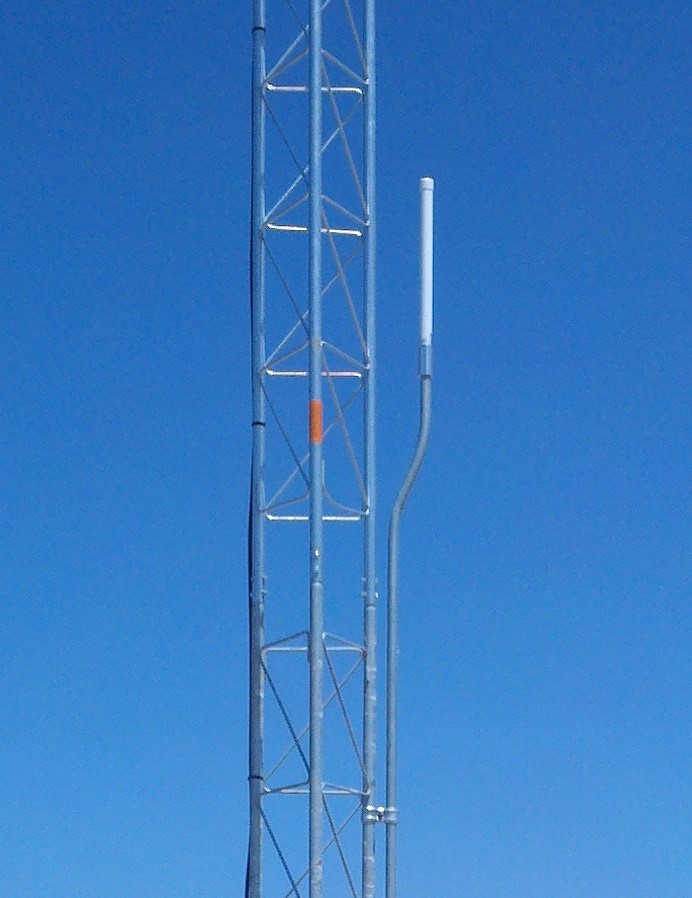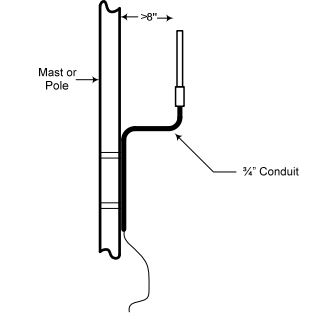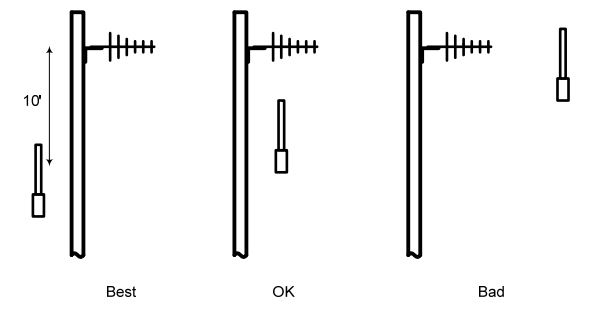Correct Antenna Mounting and Mitigation of RF Interference Improve Radio Reception of SignalFire Remote Sensing System
SignalFire Remote Sensing Systems (SFRSS) implement a two-way mesh technology that couples an innovative message-forwarding architecture with low-cost, high-power ISM-band radios to create a simple, affordable wireless remote monitoring and control system. 
At the heart of every SFRSS are remote transceiver “Sentinel” nodes (radio modules) that interface with sensors, extracting data and sending a powerful, long-range transmission of data to a Gateway in the unlicensed ISM bands that sustains signal strength through terrain, structures, or weather.
Good radio reception in data transmission from these radio modules is affected by several factors including antenna/system mounting and interference from outside/other RF sources. These tips will help you boost radio reception for greater telemetry system performance.
Correct Antenna Placement
The rules for antenna placement are simple but often difficult to deploy in the field. For best configuration, follow these rules as closely as possible.

- Height – The higher (within reason) an antenna placement, the better. Configure the antenna at least 3 feet off the ground. Mounting an antenna above 10 feet has diminishing returns unless something is in the way to get over.
- Proximity to Metal Objects –Keep the antenna away from the side of piping, conduit, or any metal object. The minimal distance is at 8 inches; further is better.
- Other Antennas – Mount the SignalFire antenna/module out of the way of other antennas.
- Line of Sight – Mount the unit so it has the best possible link to the Gateway or a routing neighbor.
Correct SignalFire Stick Mounting
SignalFire Stick Antenna/Systems are designed for mounted using a ¾” conduit screwed into the base of the Stick. The six-conductor wire can be routed through the conduit. Keep the Stick away from any metal mounting pole by at least 8 inches.
Interference from other Radio Systems
The SignalFire Radio System is programmed to only transmit data when necessary to preserve bandwidth for other systems. Unfortunately, some other radio systems do not perform like this and transmit continually. There are several ways to determine whether this will be a problem or not.
- Yagi antennas generally mean slave or remote radios that do not transmit continually and usually do not create an interference issue as the SignalFire radio system will retry a message until it receives confirmation that it was received by the Gateway. These antenna types are most commonly used in the field near SignalFire equipment. While posing small interference risk, mounting the SignaFire Stick in a correct location (away from other antennas) can avoid potential issues.
- Omni-directional antennas may have attached base-station radios that pose an interference issue. Try to keep your SignalFire radio away from a base-station radio.
- Keep SignalFire radios out of the plane of both antenna types and position directly above or below them, if possible.
- If a SignalFire radio must be located close to an always-transmitting base station radio, frequency banding (having the base station transmit on one set of frequencies and the SignalFire radio transmit on a different set) can help.
Recommended SignalFire Stick Mounting Near Yagi Antenna

An antenna is ideally mounted away from the pole and other metal objects while poor antenna placement is too close to other objects. The last antenna mounting configuration is considered “bad” as the directional antenna is pointing right at it.
Most Yagi antennas connect to remote or slave radios that do not transmit very often, similarly to a SignalFire Sentinel node or Gateway. SignalFire equipment is very “frequency band friendly” and does not use up (in time) much bandwidth.
For more answers to your antenna mounting questions, contact us at support@signal-fire.com. Find answers to other frequently asked questions here.
0 Comments
Leave a reply
You must be logged in to post a comment.




